What Do The Different Colors Mean On The Inside Of Vicidial
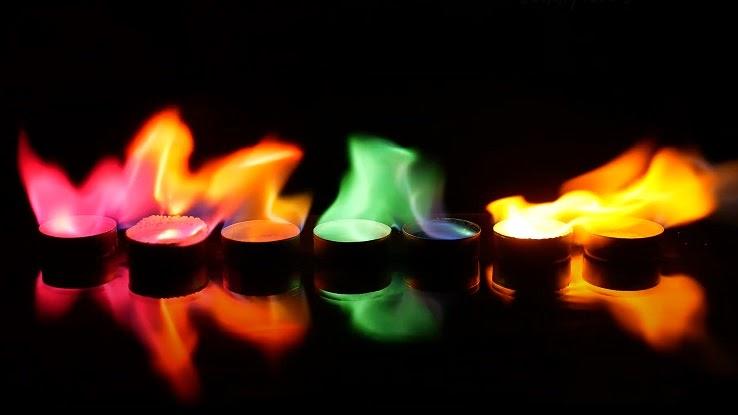
When picturing flames, most people imagine a traditional orangish fire. However, there are plenty of instances in which fire doesn't burn orangish. In fact, flames can span the unabridged color spectrum. So, what causes the divergence in flame colors? What chemicals can change the color of fire? And what part does temperature play? We're going to shine a low-cal on all of that and more.
What Causes Flames to Exist Different Colors?
To understand what causes different-colored flames, information technology'south important to understand the scientific discipline behind visible low-cal and fire. Kickoff off, fire is a chemical reaction that happens following combustion when chemical and gas molecules interact with oxygen. Additionally, not all burn exists on the visible light calibration.
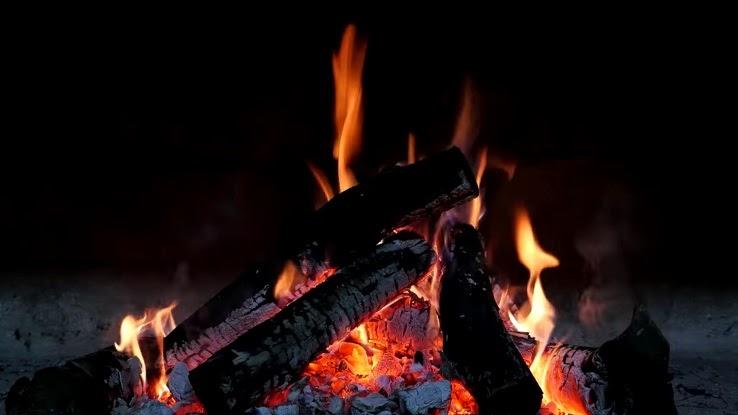
The visible light calibration consists of whatsoever electromagnetic radiation that the naked homo eye can view. Colors, as we know them, appear as a result of light passing through a prism. Nosotros're able to perceive unlike colors considering of their varying wavelengths. For example, ruby has the longest wavelength, while violet has the shortest.
When flames appear in different colors, they are responding to both rut and chemicals. The ordinary color spectrum of fire spans the range of relatively cool to very hot, which is represented by the acronym ROYGBIV in relation to the color spectrum:
- Red
- Orange
- Yellow
- Green
- Blue
- Indigo
- Violet
Which Colour Represents the Hottest Fire?
Despite its icy hue, the hottest colour of flame is violet. At over 1,650 degrees Celsius, violet flames' high temperatures can slice through nearly whatsoever metal, glass, or stone with ease. For this reason, you can oftentimes spot violet and blue flames at the end of welding torches. (Though welders wear protective goggles to continue from burning their eyes from the lite.)
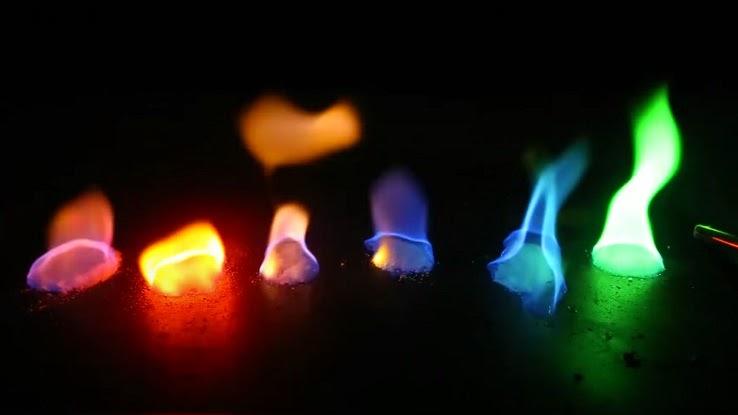
It'south also of import to note that violet and blue flames are as well produced by the carbon and hydrogen that are nowadays in burning wood. This is why you might spot flickers or bluish or violet when y'all're gathered around the campfire.
While violet flames can sear the toughest substances, blood-red flames, which are the coolest, are not so powerful. Although ruby may be a typically fiery color, it'southward not the hottest flame, with temps hovering at around 600 to 800 degrees Celsius. This may audio like a high temperature, only compared to the 1650-degree blue flames, crimson flames are pretty mellow. Still, flames of this temperature can melt aluminum, pure silver, tin, lead, bronze, and brass. Fun fact: Some red flames are so absurd that they're tough to spot with the naked eye, but those 800-degree flames will burn a rosy red colour.
As yous can tell, at that place is a direct link between the oestrus of a flame and the color that a burn down burns. Flames that are colder or starting to fizzle away will accept a unlike hue than a raging burn or newly sparked match. The amount of heat and free energy released during combustion is tied to the hues of the flames. To review, the hottest flame on the colour spectrum is violet and, on the visible spectrum, information technology's white.
Here's a more than complete breakup of the temperatures of different flame colors and what they can burn:
- Ruby-red flames burn at approximately 600 to 800 degrees Celsius. The hottest of carmine flames tin melt substances such as magnesium (657° C), glass (700° C), and borax (740° C), while the coolest of these flames tin can cook lithium (179° C), selenium (220° C), tin (232° C), amber (300° C), and zinc (419° C).
- Orangish flames fire at approximately 1100 degrees Celsius. These flames can scorch through bronze (910° C), gold (1063° C), and copper (1083° C).
- Yellow flames fire at approximately 1200 degrees Celsius. These flames will melt arsenic (815° C), calcium (850° C), brass (900° C), silver (960° C), and radium (960° C).
Interestingly, green flames have no link to temperature, but rather to the chemicals that fuel them, which we volition talk over below.
- Blue flames burn at approximately 1400 to 1650 degrees Celsius. This makes the coolest blueish flames capable of melting asbestos (1300° C), steel (1460° C), and cobalt (1490° C), and the hottest bluish flames capable of melting palladium (1552° C), brown fe ore (1570° C), melting clay (160°0 C), and agate (1600° C).
- Indigo flames burn at only under 1650 degrees. These flames tin melt through aluminum bronze (1040° C), quartz (1470° C), iron-oxide (1570° C), and sand (1550° C).
- White flames burn down at approximately 1300 to 1500 degrees Celsius. These flames tin can burn through many tough solids, including uranium (1133° C), nickel (1452° C), and cobalt (1490° C).
- Violet flames burn over 1650 degrees. This makes these flames powerful enough to turn hard-to-cook materials into puddles, such as cast iron/forged iron (1200° C), steel (1460° C), porcelain (1650° C), and titanium (1670° C).
What Chemicals Modify the Color of Flames?
Temperature isn't the sole determiner of the color of flames. Different colors of flames tin can also stalk from the types of chemicals that are present in the substance that'south being burned. The blazon of fuel and its impurities, in addition to the flame temperature, contribute to the color of the flame.
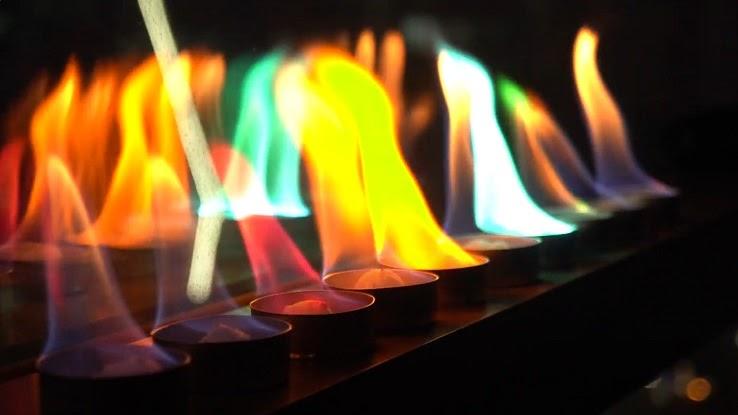
Certain chemicals in woods, candles, or other fuel sources can spark varying colored flames at their source. That is, elemental particles the flame's illuminating influence its color as much as the temperature the burn burns at. These are the chemicals and materials responsible for fire's various colors:
- Red: Caused past strontium chloride or strontium nitrate. Spotted in slow-burning fires.
- Orangish: Caused by the burning of carbon particles or calcium chloride. Spotted in about campfires, charcoal grills and fireplaces.
- Xanthous: Acquired by sodium chloride, sodium carbonate, or borax.
- Green: Caused by copper or barium. No link to temperature.
- Blue: Caused by copper chloride or the complete called-for of carbon in a fuel source.
- Indigo: Caused by indium.
- White: Caused past magnesium sulfate.
- Violet: Acquired by potassium nitrate mixed with potassium sulfate.
Why Are Orange Flames the About Mutual?
When it comes to burn, why are orangish flames the about (seemingly) common colour? Orange flames run at approximately 1100 degrees Celsius, putting them in the middle range of flame temperatures. Nigh organic items that people burn — paper, forest, charcoal — contain carbon. So, when these items are burned, they release carbon particles into the flame, causing these particles to create deep orange, "articulate" orange, and yellow flames.
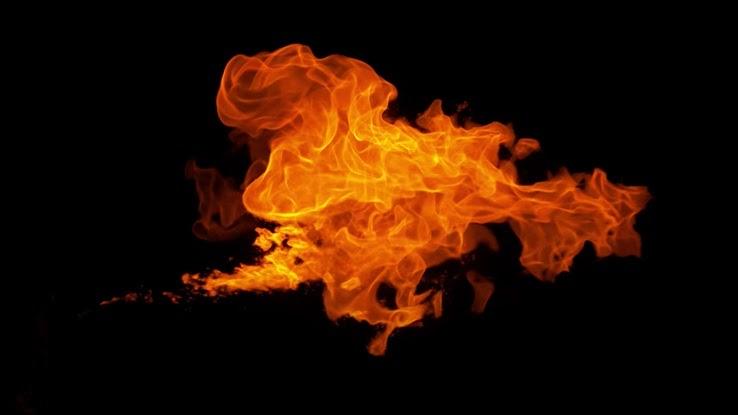
When all carbon particles are burned out of a fuel source — and at that place are no remaining traces to be consumed — the flame may then spark blueish or violet in response. For case, stovetops and gas grills both feature blue flames because they're not responding to a carbon-based fuel source.
What Do The Different Colors Mean On The Inside Of Vicidial,
Source: https://www.reference.com/science/color-hottest-flame-ea25c95668a5b0d1?utm_content=params%3Ao%3D740005%26ad%3DdirN%26qo%3DserpIndex
Posted by: brownpromarls1989.blogspot.com


0 Response to "What Do The Different Colors Mean On The Inside Of Vicidial"
Post a Comment